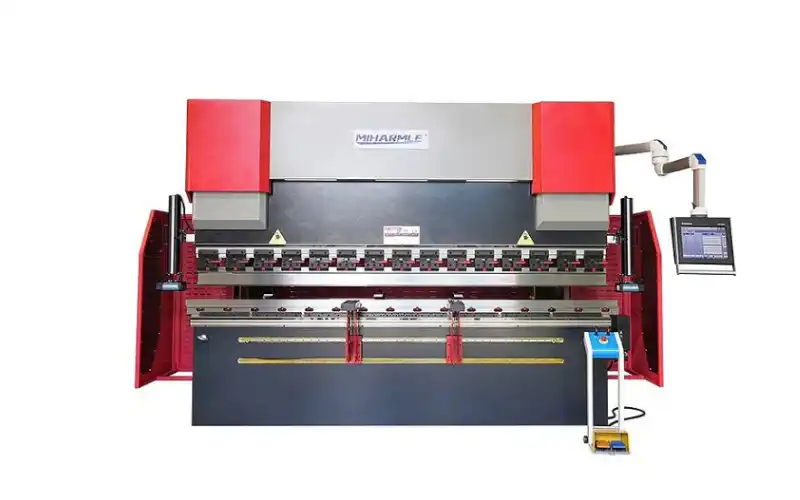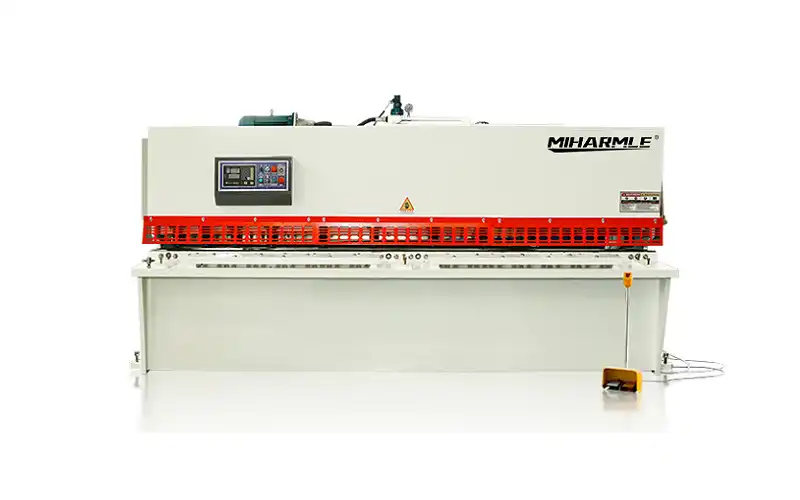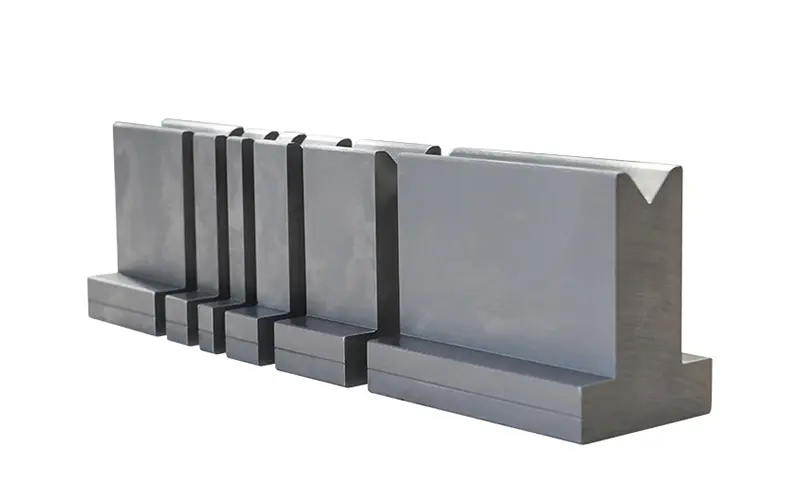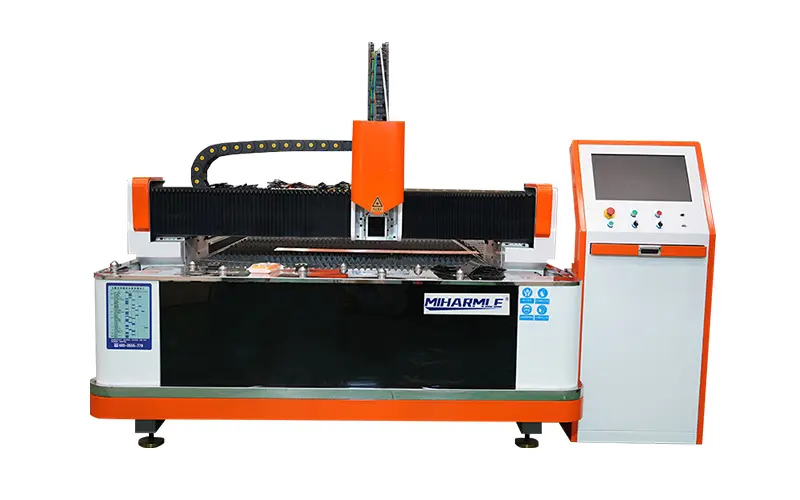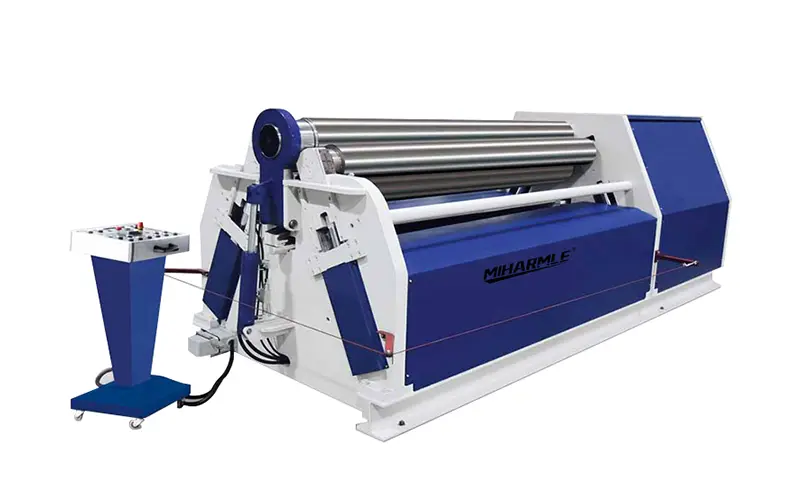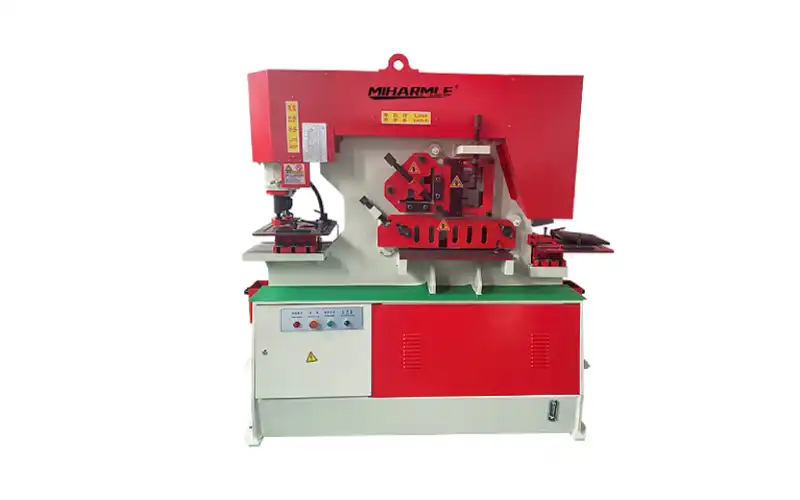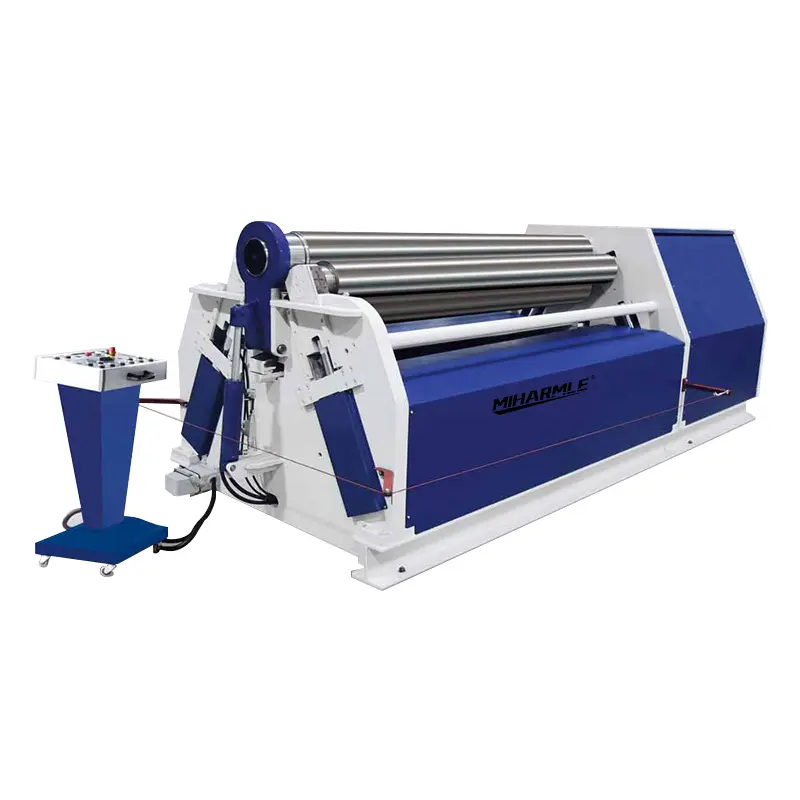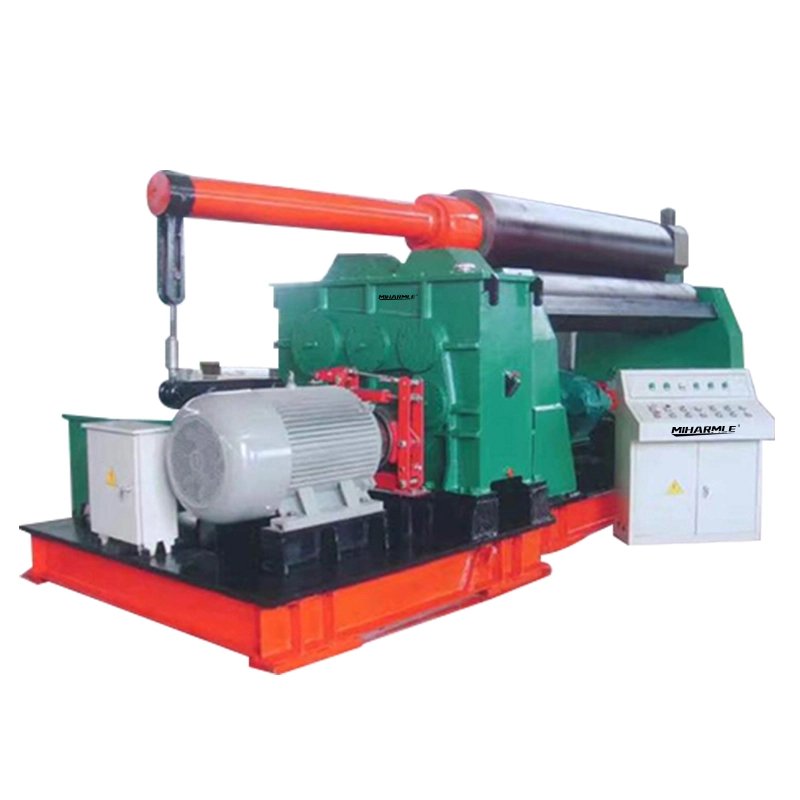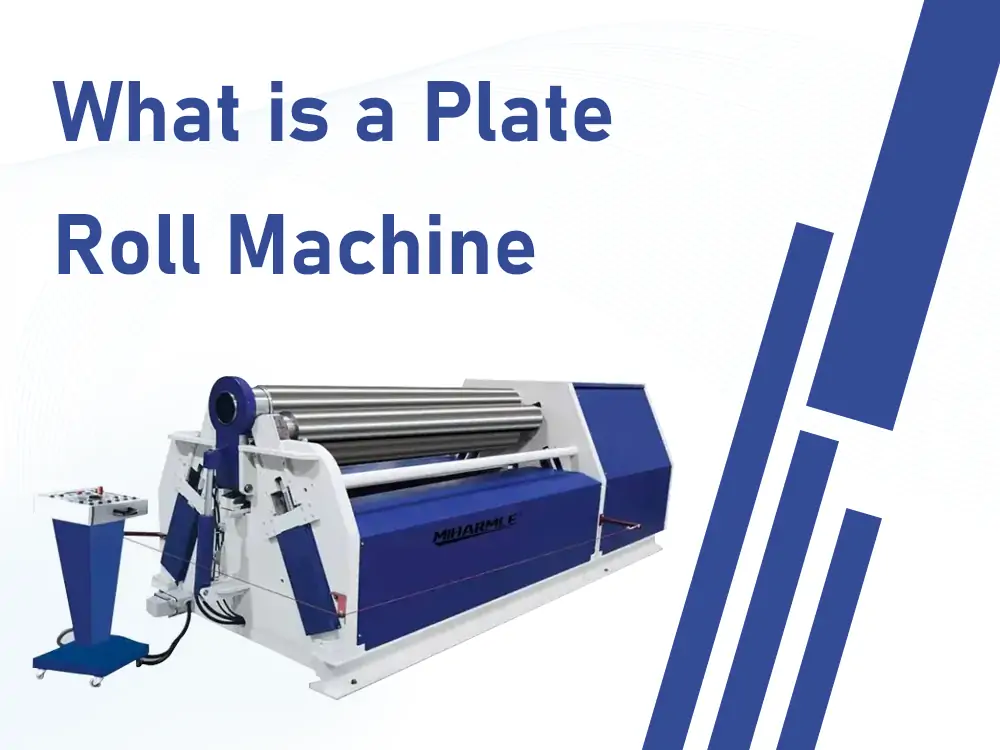
Manual bending and forming of metal sheets was a time-consuming process. Workers had to do all the work manually. However, things have changed with the invention of plate roll machines. They complete the bending in minutes with minimal human labor. Despite all that, beginners often ask: What is a plate roll machine, and what is it used for?
The roll machines use multiple rolls and efficiently convert plates into cylindrical shapes. The manufacturer can quickly achieve different angles, curves, arcs, and shapes. However, this is a relatively new invention, and many people don’t quite get how they work. That’s what made me write this article.
I’ll explain these roll-bending machines from the basics to more advanced information. By the end, your confusion will be a thing of the past. So, buckle up, and let’s get started!
What is a Plate Rolling Machine?
Plate roll machines consist of rollers that roll and bend the metal sheets. Some machines have three rollers, while more advanced ones have four rollers. Either electric or hydraulic motors power these machines. The metal sheet placed between the rollers gets bent when the rollers move.
In the past, forming metal sheets was a very complex process. Workers had to put in manual efforts that affected precision. However, these roll machines work efficiently and produce bends with precision. These machines consist of specialized rollers that perform heavy-duty bending.
Based on roller, these machines are available in different types. However, the working principle of each type is the same. Plate rolling machines use straightforward mechanisms. The simple plate roll machines come with two rollers. On the flip side, more advanced machines can have rollers three, four, or even five rollers.
These rollers are adjusted, and metal plates are placed between them. You might wonder how this plate fits between those rollers. Right? This metal sheet is placed between the top and bottom rollers (in the middle). The lower or bottom rollers move up and clamp the metal sheet.
Keep in mind that these machines can be either hydraulic or electric-powered. Upon switching on the power source, the rollers of these machines start to roll. As the rollers roll, they bend the sheet placed in between, changing the metal plate into curves. The roller does not stop until the desired shape is obtained.
Modern rolling machines are CNC (Computer Numerical Control) based. This means that they are more accurate and precise than manual ones. You just have to feed initial instructions and templates to the computer in coded form. During work, machines follow those computerized instructions. As a result, they make 100% precise bends or arcs.
Components of Plate Rolling Machine
I discussed the primary working plate rolling machines in the above section. However, I would like you to learn about their essential components. Understanding them will help you better understand their operations. Let’s discuss the critical elements of these machines.
1- Rollers
Rollers are crucial parts of plate rolling machines. They are responsible for bending flat metal plates. One machine can have multiple rollers working simultaneously. More rollers mean that machines are more capable of making complex bends. One roller remains at the top, the other on the bottom and sides.
Remember, rollers apply a force on the metal plate and bend it. CNC-based machines can bend the plate sheet at specific angles by moving the roller accordingly. These rollers are formed by stiffened material like steel to combat the pressure. Their surface is kept smooth but not slippery.
2- Frame
The frame is the platform on which other components are mounted. It is a base that holds the machine’s components together. A weak frame indicates a fragile machine, and vice versa. Manufacturers generally use steel to make this frame. Steel is solid and gives the frame the required stability.
However, some inexpensive machines come with iron frames. This iron material is not as strong as steel but works fine. It won’t be wrong that this frame acts as the heart of these machines. Its design and structure are generally kept simple so rollers can rotate easily. The durability of machines depends on frame strength.
3- Drive System
The drive system is another critical component in rolling machines. It powers the machinery, including rollers, motors, gears, and other parts. A simple electric plate rolling machine’s drive system consists of a motor and belts.
Remember, the drive system of the modern CNC plate rolling machine is computer-based. Efficient running of the drive system is crucial for the whole machine’s system. Hydraulic plate rolling machines contain a drive system with a hydraulic pump. Different rolling machines can have different drive systems.
Types of Plate Rolling Machine
At the start, I mentioned that plate rolling machines have different types. The types vary in terms of the number of rollers they consist of. Let’s discuss each of those types.
1. Three-Roll Plate Roll Machine
It is the simplest type of plate-rolling machine. It is easy to operate and generally works best with thin metal plates. Its simple design makes it beginner-friendly. This type is popular among metal workshops. These machines consist of three substantial rollers arranged in triangular geometry.
One big roller is present at the top position. Two smaller rollers, known as bottom rollers, are fixed at the bottom. The operator places the above two rollers below the first big one. Two fixed rollers hold the sheets tightly, and the top roller rotates. Gradually, the sheets start bending.
Quick Highlight: Operators can repeat rolling if they need more complex or sharp bends. Once the desired arc or bend is obtained, the operator can switch off the machines. Remember that precision is compromised in this type due to its traditional design.
2. Four-Roll Plate Roll Machine
These more advanced machines consist of four rollers and are more versatile. Their excellent versatility allows operators to achieve complex bends and arcs. What I like about these four-roll machines is that they help make circular, cylindrical, and conical shapes. For example, you need a round or cylindrical drum, and these machines are perfect for this task.
You can simply place the sheet and let the machine work its magic. Its bending will be so even that the sheet will become a circular or cylindrical drum shape. It is well-known for its extraordinary precision and flexibility. Let’s discuss the position of the rollers of these machines.
Two rollers are fixed at the bottom. They are suitable for holding the sheet. The other two rollers are present at the top position. They move (roll) and bend the sheets easily. Depending on the machine’s brand, its positioning can be horizontal or vertical. The modern four-roller machine has a CNC system, which is ideally precise.
Quick Highlight: The three roller machines have limited bending power. They can only bend thin sheets. However, these four rollers are solid and precise. They can bend any plate, no matter how robust or thick it is!
3. Pinch Roll Plate Roll Machine
Do you want enhanced performance (precision) for your professional work? If so, these pinch roll machines can be a suitable option. Let me explain why I consider these machines better than others in terms of precision. They have excellent gripping ability. Similar to three rollers, these machines also have three rollers.
However, their two bottom rollers are vital in increasing their precision. They hold the plate firmly so it does not move during work and remains stable. So, the machine makes bends precisely similar to the instructions you feed on the computer. The pinch in the name indicates its better gripping feature.
The three rollers of this machine are arranged in triangular geometry. Two bottom rollers are fixed parallelly. The top rollers are vital in bending the material, as the bottom holds the material. These machines are also powerful, so they can easily bend plates of different thicknesses.
It won’t be wrong to say that this is the top variant and comes with excellent features. Its top-notch safety standards, sensors, and emergency stops ensure it suits workers. However, its structure is very complex. You must be an expert in operating such an advanced system. Additionally, it requires regular maintenance.
Quick Highlight: Some rolling machines have only two rollers. They are very uncommon, and their performance is compromised. The types that I have explained above are more common and ideal for professional work. I don’t recommend you buy those cheap machines as they don’t serve the purpose perfectly.
Applications of Plate Rolling Machines
It wouldn’t be wrong to say that metalwork would be incomplete without these rolling machines. They serve different industries that use metal sheets. Let’s discuss some popular applications of plate roll machines.
1. Metalworking
Metalworking benefits almost all other industries. It is the process of converting one metal into different shapes. Manufacturers bend different metals to make various products that serve diverse purposes. Plate bending is done using rolling machines, a must-have for metalworking.
Without these, bending material would be time-consuming. These machines also bend with 100% precision. Metalworking industries can now create specific shapes based on the client’s choice. They can make circular, cylindrical, conical, and many other shapes. Manufacturers can make complex shapes with precision.
2. Construction
Construction industries highly rely on these bending machines. Their work requires different products with different complex shapes. Metal rolling machines design these shapes. These machines also make the metal frames of buildings, bridges, and other sites.
3. Shipbuilding
Shipbuilding industries widely use plate rolling machines to make ship parts. For example, the hull is a curved primary body structure of ships. These machines make this complex curved body. This is just one example; different parts production relies on these rolling machines. Examples include staircases, offshore platforms, and knuckleheads.
4. Automotive
The frames and roofing of vehicles are made of big metal plates. These rolling machines bend and shape the plates. The exhaust system of vehicles is critical in emitting harmful gases. Pipes are used in those exhausts, which are made through rolling machines.
Modern vehicles and other automobiles have unique body shapes. Their curves are beautiful and make the car unique. Rolling machines also do curves and bending, which means that they help form complex body structures. These machines result in curves that enhance the aerodynamics of vehicles.
5. Aerospace
Have you ever noticed an airplane’s gigantic wings? How are they made? Making those curves in the wings would be impossible without these machines. The wings are big metal sheets that the manufacturers cut and bend.
They use these plate roll machines to get the desired shape during bending. The aviation industry highly focuses on aerodynamics. Right? These rolling machines help in that cause by creating strategic curves. Many airplane parts and body structures are the result of these rolling machines.
Quick Highlight: These machines are used widely across many industries. I cannot mention the names of all those. In simple terms, every industry that uses metalwork to some extent uses these machines. This thing would give you a better idea of their usability.
Advantages of Using Plate Rolling Machine
Are you following along with the article? If so, you would have a better understanding of these machines. But don’t close the tab just yet—there’s more to spill. Let’s dive deeper and discuss the advantages of these plate-rolling machines. It would help you know why these machines are super popular.
- Precision: First, the rolling machines are top-notch in terms of precision. Their modern versions come equipped with a CNC system. It ensures the right bend and reduces the waste of material. So you won’t have to try again and again to get the right shape. The machines will follow the fed computerized instructions. So, it bends the plate sheet accurately and does not create cracks or affect sheet integrity.
- Easy to Operate: The working of these machines is super easy. You don’t need to be a tech expert to get things rolling. They are straightforward, and someone with basic know-how can operate these machines. Moreover, modern machines further reduce the need for labor. Only a single operator can get the job done.
- Better Efficiency: They are very efficient and can create different shapes quickly. So, if you are a professional business, using these rolling machines will uplift your productivity. You’ll be able to meet strict deadlines with ease. The manual bending technique takes more time, even for simple bends.
- Cost Effectiveness: The initial cost of these plate roll machines is not very high. So, their low price makes them very suitable for businesses operating at different levels. However, some high-end CNC-based machines can be a bit more expensive. However, if you manufacture at a smallish level, you should buy a simple machine without a CNC system. It will be more than enough for your work. Moreover, their regular maintenance cost is also meager.
How to Choose the Right Plate Roll Machine?
Did the benefits mentioned above excite you? You might have decided to buy these machines. It is a wise decision, as investing will do tons of good. It would simply take your business to a whole new level of success. But I don’t want you to randomly pick a plate rolling machine.
Making a purchase decision without having basic info is like asking for trouble. The suitable machine will give you peace of mind. At the same time, the wrong selection can bring a headache. Let’s go down and explore some key factors that you must count when buying plate roll machines.
1. Capacity and Size
Different rolling machines have different bending power and capacity. It is about a machine’s ability to handle a sheet’s thickness. A machine with less thickness capacity cannot bend a thicker metal sheet. So, you should pick a machine that meets your needs. I recommend buying a mid-range machine that can bend thin and thicker sheets.
The sizes of the machines also differ. For example, some machines are compact, but their power is also low. So, which machine should you pick, oversized or compact? Honestly, striking the right balance is your best bet. You should choose a plate roll machine with decent bending power and optimal size. Selecting a giant machine would take up more space.
2. Roller Configuration
As said above, plate rolling machines come with different numbers of rollers. Some have three, while others can have four or even five. So, which machine should you use? Deciding this is very simple. If you aim to bend thin plate sheets, you should consider three-roller machines. These machines are inexpensive.
The four roller machines are suitable for thick metal plates. They are more powerful and can bend sheets of any thickness. Two of their rollers are mounted at the top and remain fixed at the bottom. These machines should only be considered when you’re operating at a professional scale. They will help you bend any material sheet with ease.
Quick Tip: You might get advice from somewhere about buying a two-roller machine. I strictly advise you not to buy those as they are constrained. Their precision and power are significantly compromised. You won’t be able to work correctly. It would be a money-wasting step.
3. CNC System & Automation
Another critical factor to consider is automation and control. Plate rolling machines come with various levels of automation. The basic two or even three-roller plate rolling machines have no specific CNC automation. Therefore, they are relatively less expensive. However, advanced types of these machines, such as four rollers, come with a CNC system.
The CNC system reduces human errors and gives accurate bends or shapes. But the rolling machines with a CNC system are pretty expensive. Is it OK for you to pay more for that CNC machine? Well, you should answer this question depending on your budget. One thing that I must say is that paying more for CNC machines is worth every penny.
4. Budget and Cost of Ownership
Plate rolling machines are available at different costs. However, their cost increases with added features. If you’re starting a new business, I recommend inclining toward practicality. You should not look for premium features, as those will add cost to the machines.
Instead, you should buy a machine that efficiently bends the sheets. Keep in mind that advanced machines require proper maintenance. An expert staff is necessary to operate them, which can enhance the cost of one ship. Moreover, you should not neglect the machine’s energy efficiency.
Quick Tip: Some people make the mistake of buying high-end machines at the start of their business. You should not do that, as it could result in more expenses that drain you out of your business. Instead, you should follow a steady approach. Start with primary machines. Once you get your business settled, invest in those high-end CNC-based rolling machines. MIHARMLE will give you the best Plate Rolling Machine price, contact us to order!
Conclusion
The plate rolling machines work their magic in the bending process. They speed up the process and enhance the accuracy of bends. Creating such smooth curves and arcs would have been impossible without these machines.
Their usage is becoming standard across different industries. However, many people seem to be in a dilemma when working with these machines. This guide is dedicated to these Machines. I’ve explained each aspect, leaving nothing that could cause you confusion about these rolling machines.

